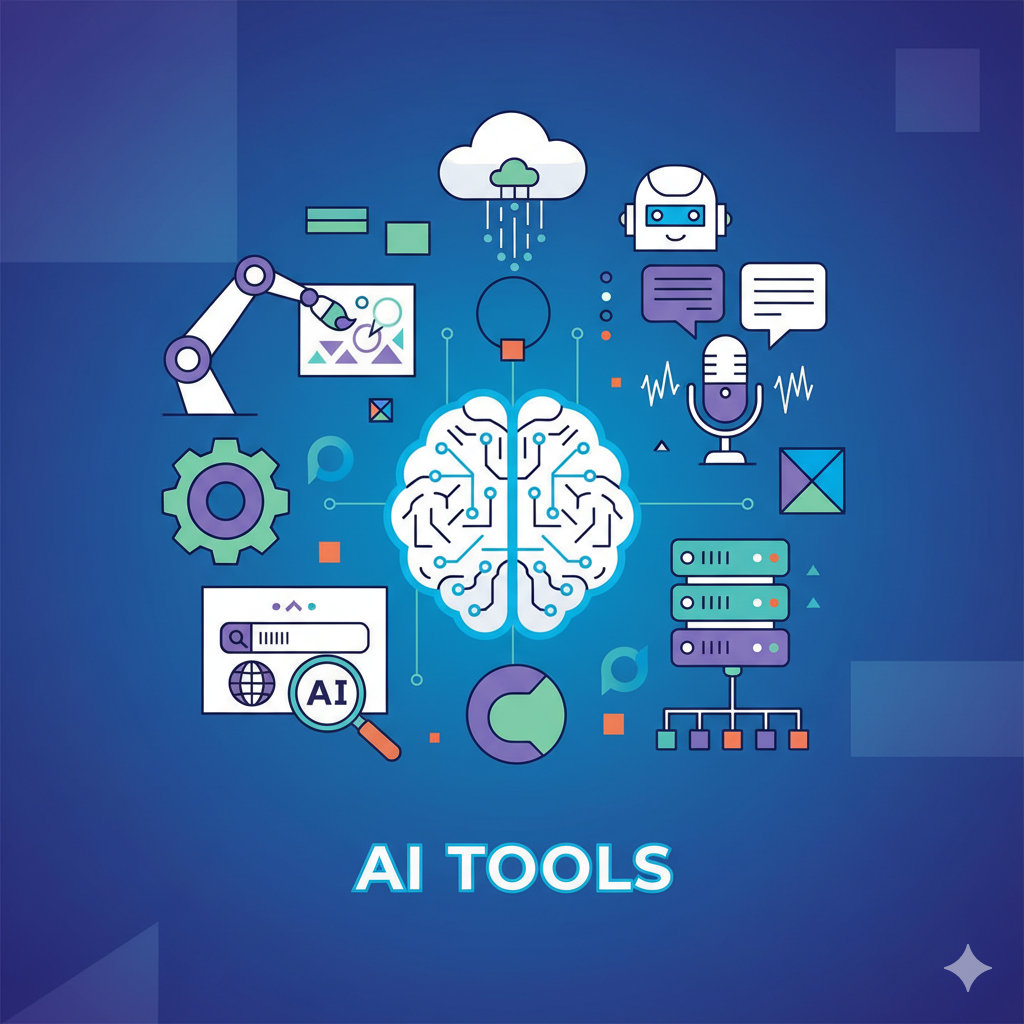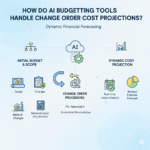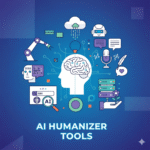Artificial Intelligence (AI) tools are everywhere today. From content creation and analytics to customer service and automation, there’s an AI solution for almost every task. But with so many options, how do you decide which one is actually worth your time, money, and effort?
I’ve seen many people rush into subscribing to AI tools just because they are trending. Later, they regret it because the tool doesn’t fit their workflow, is too expensive, or simply doesn’t deliver results. Evaluating AI tools requires a bit of structure otherwise, it’s easy to get lost in the marketing hype.
In this article, I’ll walk you through a step-by-step way to evaluate AI tools so you can make smarter decisions. Whether you’re a marketer, business owner, or even a student exploring AI for personal use, these principles will help you pick tools that add real value instead of just being shiny objects.
Why Evaluating AI Tools Matters
Before diving into the process, let’s quickly understand why evaluation is critical:
- Saves money – Many AI tools work on a subscription model. A wrong choice can mean wasted monthly expenses.
- Improves productivity – The right tool can automate tasks, save time, and free you to focus on strategy instead of execution.
- Future-proofing – AI tools evolve fast. If you evaluate correctly, you won’t need to switch tools every few months.
- Avoids frustration – Poorly designed tools can drain energy rather than save it.
So, evaluation is not just about features—it’s about aligning the tool with your business goals, workflow, and scalability needs.
Step 1: Define Your Goal Clearly
The first mistake people make is picking a tool without knowing their exact need. AI is powerful, but it’s not a one-size-fits-all solution.
Ask yourself:
- What problem am I trying to solve?
- Is this a “must-have” or just “nice-to-have”?
- Will this tool help me save time, improve results, or reduce costs?
Example:
If you’re a content marketer, your goal may be: “I want an AI writing tool to help me generate first drafts faster while maintaining SEO quality.”
This narrows your choices instead of blindly trying every tool out there.
Step 2: Check Core Features vs. Fancy Add-ons
AI tools love to advertise flashy features. But often, only 20% of the features drive 80% of the value.
When evaluating:
- Look at the core function – Does it do the main job well?
- Don’t get distracted by features you’ll rarely use.
- Compare multiple tools with the same core feature.
Tip: Make a simple comparison table of top tools and tick off which features actually matter for your use case.
Example:
For AI image generators, the core feature is: “quality of generated images.” Fancy features like background blur or pre-made templates are secondary.
Step 3: Test the Accuracy and Reliability
AI tools often look impressive in demos, but how accurate are they in real usage? Accuracy is especially important for tools related to:
- Data analysis
- Research
- SEO recommendations
- Financial forecasting
Here’s how to check reliability:
- Run small test projects and compare results with manual work.
- Check how often the tool makes errors.
- See if it provides explainability (why it gave a result).
Example:
If you’re testing an AI SEO tool, don’t just accept its keyword suggestions blindly. Cross-check with Google Keyword Planner or competitor research to see if the data matches.
Step 4: Evaluate Ease of Use (UI/UX)
A powerful AI tool with a complicated interface is almost useless. Ease of use is often underrated but makes a big difference in adoption.
Questions to ask:
- Can I learn it without hours of training?
- Is the dashboard clean and intuitive?
- Does it integrate smoothly with my current workflow (Google Docs, Slack, WordPress, etc.)?
Red flag: If you feel overwhelmed after the first 30 minutes, chances are the tool will slow you down in the long run.
Step 5: Check Integration Capabilities
AI tools rarely work in isolation. They should fit into your existing stack.
For example:
- A content AI tool should integrate with WordPress or CMS.
- A marketing AI tool should connect with Google Analytics, HubSpot, or CRM.
- An AI chatbot should connect with your website, WhatsApp, or support software.
Lack of integration means you’ll waste time copying and pasting data manually—defeating the purpose of AI.
Step 6: Consider Pricing and ROI
Price matters, but value matters more. Instead of looking only at cost, calculate the return on investment (ROI).
Questions to ask:
- Does it save enough time to justify the cost?
- Can it replace a manual process or reduce the need for extra manpower?
- Are there hidden costs (add-ons, credits, usage limits)?
Example:
If a $50/month AI tool saves you 10 hours of manual work worth $300, it’s worth it. But if it just adds “nice-to-have” features without impact, it’s overpriced even at $10.
Step 7: Review Security and Data Privacy
With AI tools, your data often gets uploaded to their servers. This makes security and privacy extremely important, especially for businesses.
Check for:
- Does the tool comply with GDPR or other regulations?
- Where is your data stored?
- Is there a clear data usage policy?
- Can you opt out of having your data used for AI training?
Red flag: If the tool doesn’t clearly state how it handles your data, avoid it.
Step 8: Look at Scalability
Today you may be a small team, but what about tomorrow? The AI tool should grow with you.
Evaluate:
- Does the tool offer higher plans for advanced needs?
- Can it handle increasing workloads without slowing down?
- Is there an API for custom integrations in the future?
Example:
A startup using an AI chatbot today may need multi-language support and advanced analytics tomorrow. Choosing a scalable tool early saves migration headaches later.
Step 9: Test Customer Support and Community
AI tools are still evolving, and issues are common. That’s why customer support matters a lot.
Check for:
- Do they offer live chat, email, or ticket support?
- How fast is the response time?
- Is there an active community or knowledge base to troubleshoot issues?
Good support can make a mediocre tool usable, while poor support can make even the best tool frustrating.
Step 10: Verify Social Proof (Reviews and Case Studies)
Don’t just rely on the tool’s website. Look at independent reviews, YouTube demos, or Reddit discussions.
Key points to check:
- What do users in your industry say about it?
- Are there case studies with measurable results?
- Does the company have credibility and longevity, or is it just a passing startup?
Pro tip: Be cautious with glowing reviews on the official site. Instead, trust real user forums and professional networks like LinkedIn.
Step 11: Trial Period and Hands-On Testing
Never buy an AI tool blindly. Always go for:
- Free trials
- Freemium plans
- Demos with real data
Use this time to test the tool in your actual workflow. Don’t just explore features—check whether it genuinely saves time and delivers accurate results.
Step 12: Compare Alternatives
Finally, don’t stop at the first tool you find. AI is a competitive space, and multiple tools often solve the same problem.
Steps to compare:
- Shortlist 3–4 tools in the same category.
- Test them side by side.
- Compare pricing, ease of use, and results.
- Pick the one that balances cost and performance best.
Checklist for Evaluating AI Tools
Here’s a quick summary you can use as a checklist before finalizing any AI tool:
- Goal clarity – Does it solve a real problem?
- Core features – Are they strong and relevant?
- Accuracy – How reliable are the results?
- Ease of use – Is the UI intuitive?
- Integration – Does it fit into your stack?
- Pricing – Is the ROI positive?
- Security – Is data protected?
- Scalability – Can it grow with you?
- Support – Is help available when needed?
- Social proof – Do other users trust it?
- Trial test – Have you tested it yourself?
- Alternatives – Is this the best option among peers?
Conclusion
Evaluating AI tools is not about chasing trends it’s about making smart choices that align with your work and business goals. The right AI tool should:
- Make life easier
- Deliver measurable value
- Fit into your workflow seamlessly
If you approach tool selection with this structured mindset, you’ll avoid shiny distractions and instead build a solid, AI-powered system that genuinely boosts your productivity.
AI is only as good as how you use it. So, evaluate wisely, and you’ll turn AI tools into true growth partners instead of costly experiments.
Discover more from PratsDigital
Subscribe to get the latest posts sent to your email.



Pingback: What Are the Best AI Tools for Content Creation? - PratsDigital